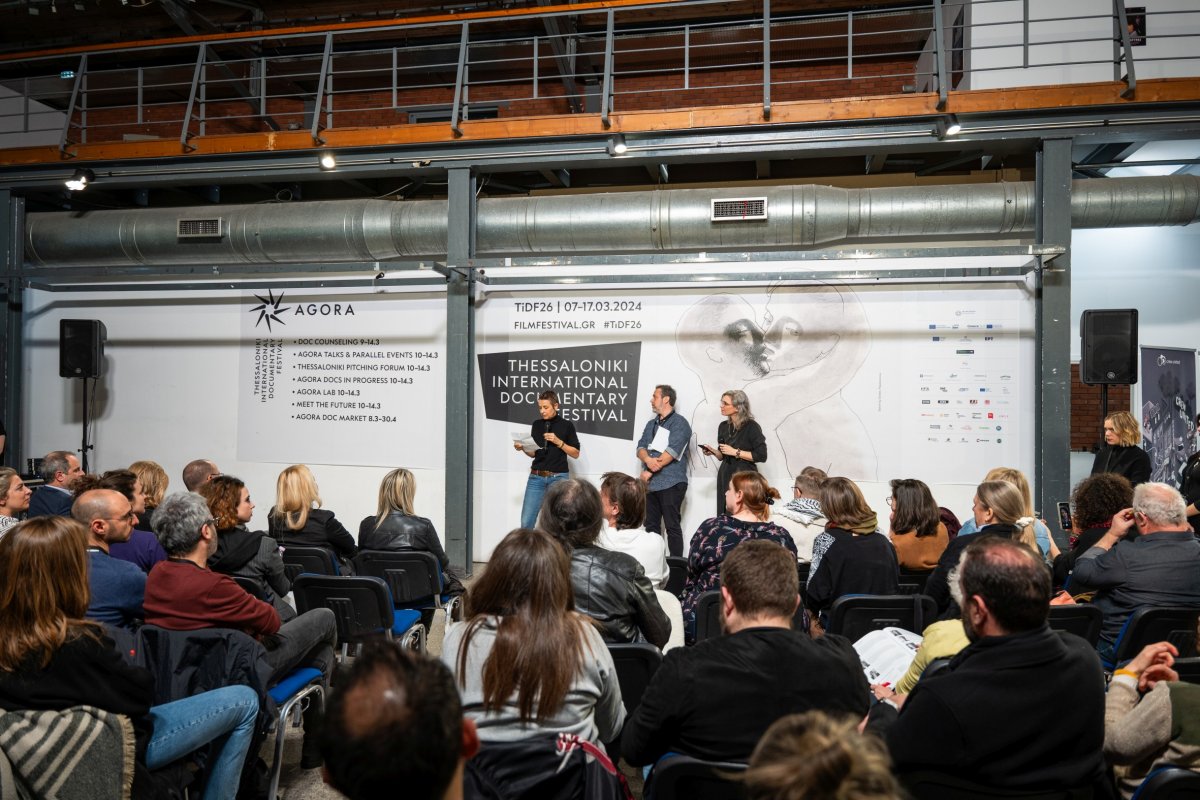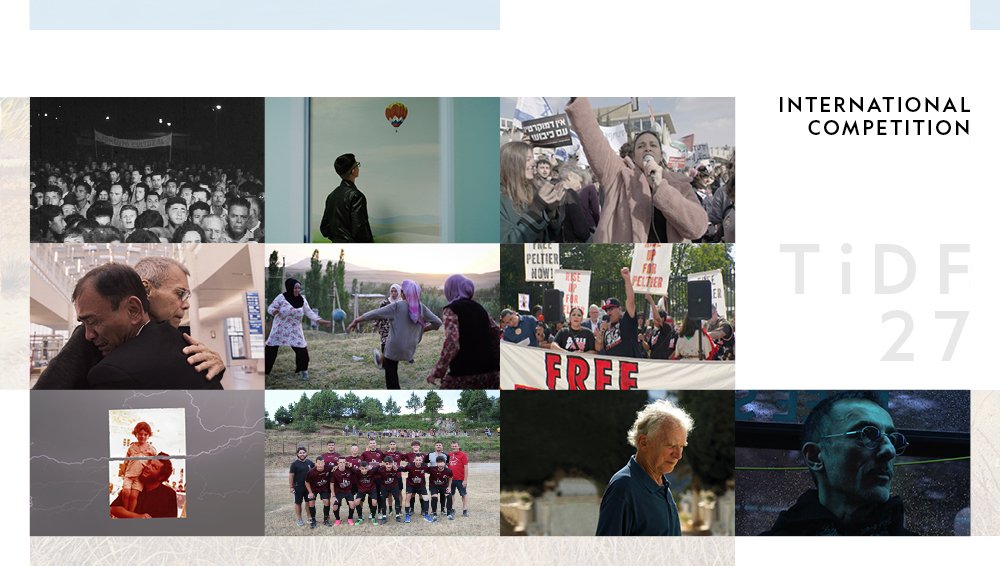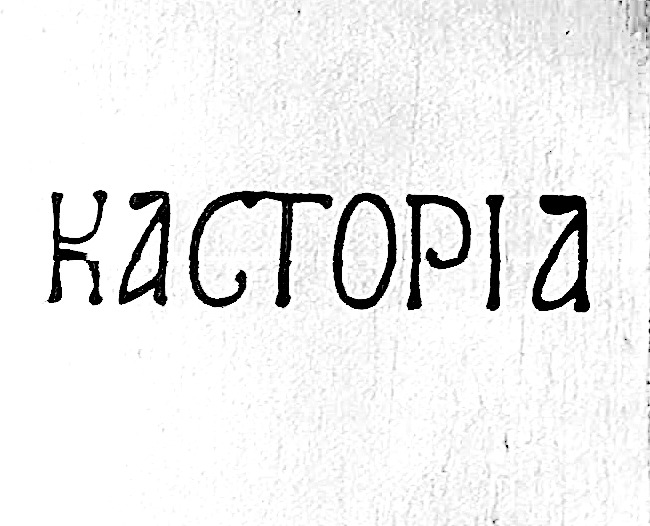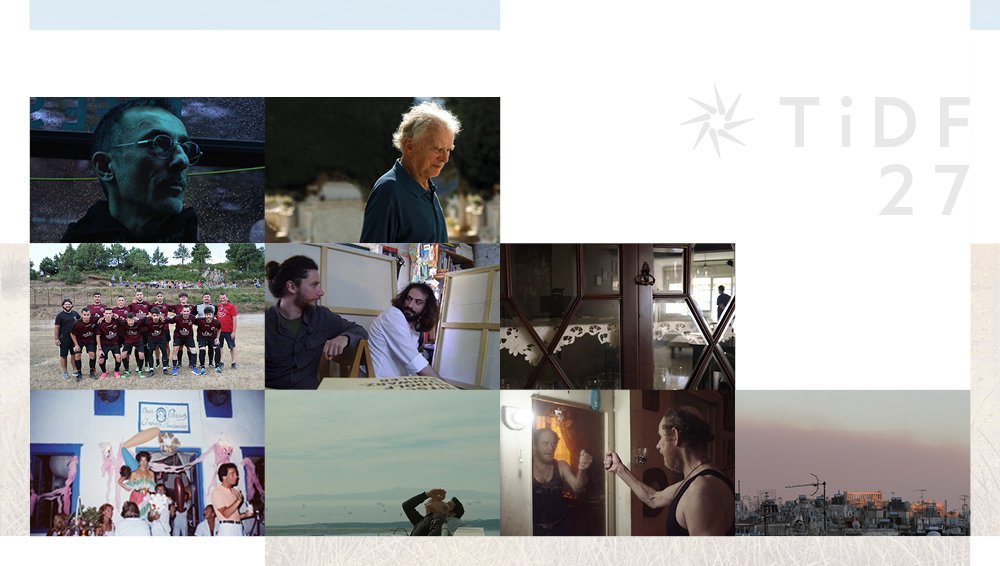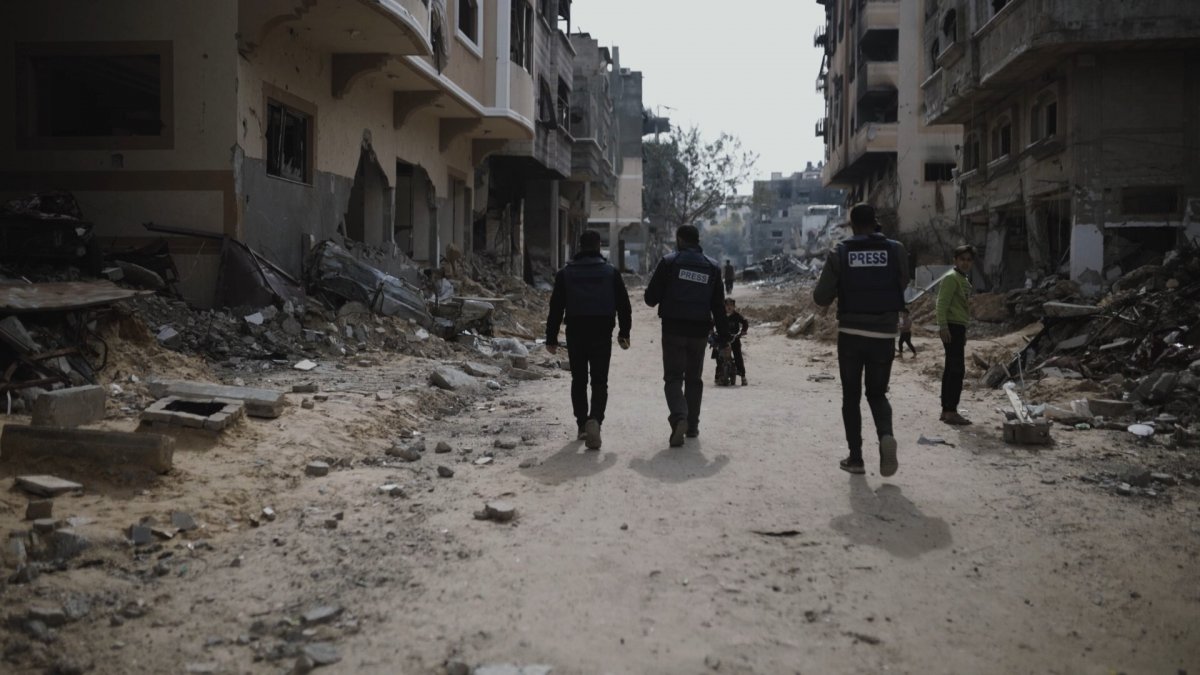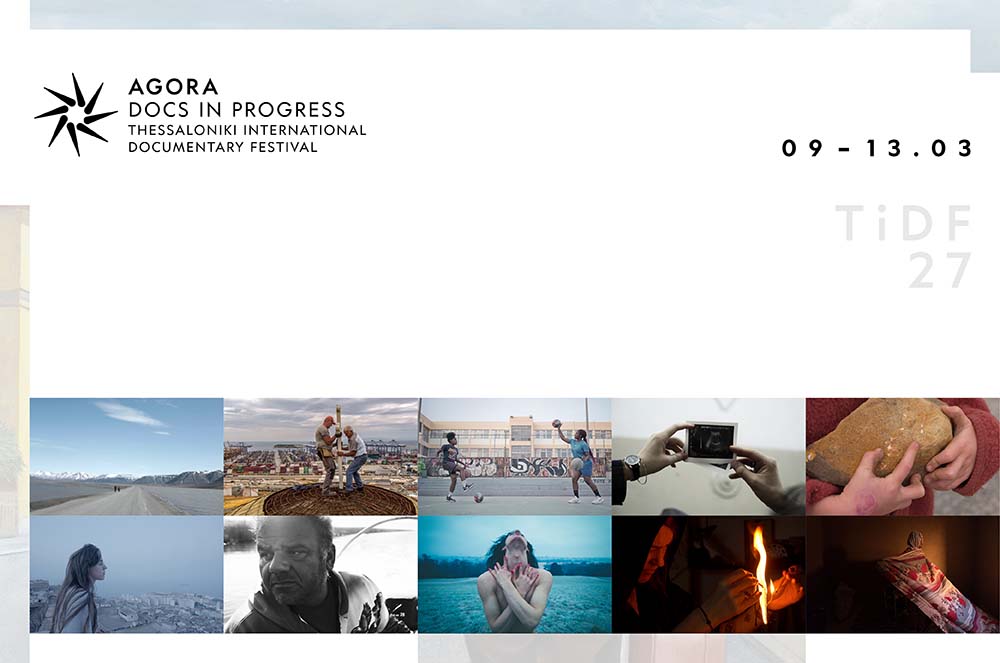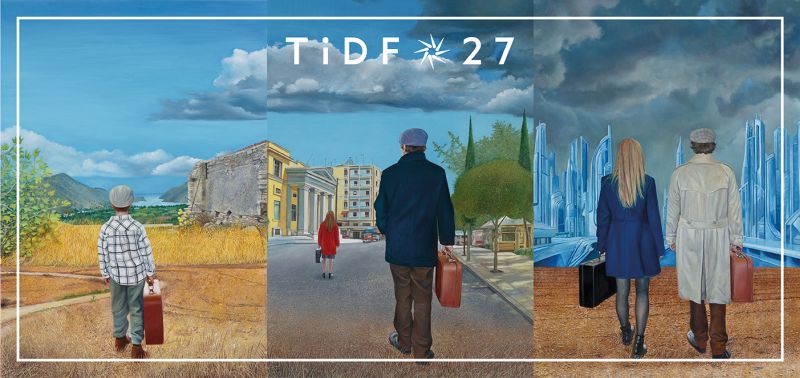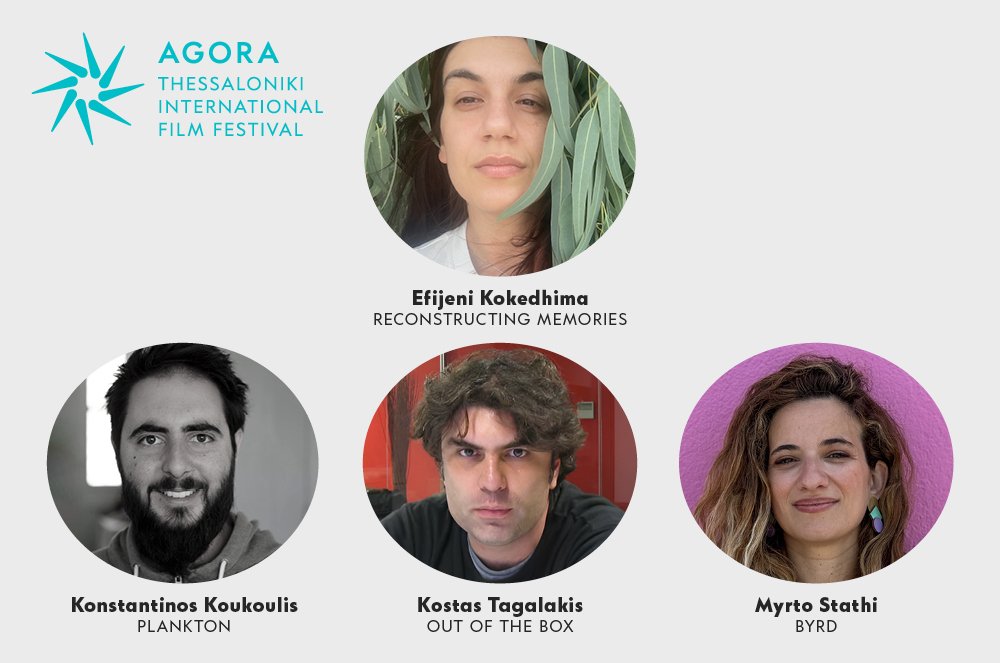Evia Film Project // 15-19 June, 2022
Masterclass by George Frentzos
Within the framework of Evia Film Project’s events, renowned director of photography (DoP) George Frentzos delivered a masterclass on Saturday June 18th, in Agia Anna, titled “Changes in Filmmaking through technological developments: What we win and what we lose”. Mr. Frentzos, in his introductory statement, he warmly thanked Thessaloniki International Film Festival for hosting Evia Film Project, before screening extracts form the films I Dream of My Friends (1993) by Nikos Panayotopoulos, It’s a Long Road (1998) by Pantelis Voulgaris, J.A.C.E. (2012) by Menelaos Karamaghiolis, White Sheet by Sonia Liza Kenterman, as well as short films The Dam (2017) by Yorgos Teltzidis and In the Room by Yeorgia Sotirchou.
“I chose to introduce myself through my work as we, directors of photography, are more apt with images than words. By the way, out of the two terms used to describe our profession, “director of photography” and “cinematographer”, I opt for the latter, as it lays out our line of work with more precision. Whatever we may be called, though, if asked to describe our task, I would say that a cinematographer, using both art and technique, and equipped with tools such as the movie camera, lenses and lights, is called to render-portray in film or any other electronic material the vision of the director. We are the director's closest partner in the stages of preparation, shooting and post-production, up until the final cut of the film. One of the most prominent DoP’s in cinema’s history, Italian Vittorio Storaro, makes a case that cinematographers “write with light”. Therefore, the director of photography and the director of a film are in close and direct contact both during the shooting of a film and in the post-production stage. I am deeply moved by the fact that many students from the Department of Digital Arts and Cinema, seated in Psachna, are among the members of the audience, as I do not only come from Evia, but I was also born in Psachna. Before going into more technical details, the simplest way to praise our profession is to confess that every new work is totally new experience. Every time, everything is new. Not only every film, but also every take is something unique and one-off”.
George Frentzos went on to make mention to the greatest revolution ever to take place in the history of cinematography, the transition from the analogue to the digital era, pointing out the most crucial benefit of this groundbreaking change can be spotted in the amount of the time earned and the speeding up of the process. “In our ties, a simple mobile app can depict the way an image is shaped in accordance with the movement and the fluctuation of sunlight. Therefore, you are in the position to precisely pick the exact time and moment of the day you wish to shoot a particular scene. Yet another example lies in how obsolete the director’s viewfinder, found in old cameras, has now become. This equipment worked as a simulator of the aspect ratio, that is of the format of the movie. Nowadays, a mobile app can visualize, regardless of the camera and the lens you may use, what your frame will be,” commented Mr. Frentzos.
Moving on to the main stage of the production, George Frentzos laid down the ways in which the process has been accelerated to an unprecedented degree. “The film was replaced by a digital sensor that films. Back in the days, a film’s negative was taken to a process lab, where a working copy would be printed in positive and be given to the editor. A cut on the negative would come up next, a new copy would be printed, étalonnage would follow, that is layering and brightness corrections, all the way to the final copy. It goes without saying that DCP was unimaginable at the time. The process I described to you went uninterrupted up until the dawn of the digital era,” he explained. At that point, Mr. Frentzos made a journey back in time, going through the most commonly used cameras in Greece, from the heavy 70s cameras to today’s tiny digital cameras, analyzing and explaining the advantages, the defaults and his personal experience of each model.
Despite the groundbreaking tech evolution, Mr. Frentzos still believes in the power of film. “It’s no surprise that many digital cameras advertise their “film look”, as digital technology cannon achieve the details guaranteed by the chemical composition of the film. Back in the days, a 35mm film roll, 122 meters long, was equivalent to 11,5 minutes, while the same roll of a 16mm film correspondent to 11 minutes of film, let alone the fact that film was really expensive. Nowadays, you can shoot endlessly and store your material in a digital card, thus enabling, among many other things, long single takes. Another crucial change is that back in the days only the cameraman could see what the camera shot. In the course of time, new models added a micro camera that transferred the image to the monitor. From my standpoint, we should stick to the rigidness organization imposed by film, even if we no longer use it. Digital easiness triggers a lack of alertness on set, taking a toll on the diligence of the groundwork. Another convenience offered by the digital sensor is the multitude of frames. We have reached the point of seeing films shot with a mobile phone in 16:9 ratio appearing vertically on screen. By the way, let me say that most old Greek films are shot in 4:3 ratio, but we watch them on TV in 16:9 ratio, as TV broadcasters want to fill the entire screen, with the exception of the National Broadcaster ERT,” mentioned George Frentzos.
The lenses and the lamps were the next chapter in Mr. Frentzos’ masterclass. “Whether we use film or a digital sensor, what’s in front of them is what counts. In other words, lenses are the most important instrument in DoP’s work. In terms of lenses, enhancements have occurred, but not to a radical degree. With regard to the filters of the lenses, film can go as fast as 500 ASA, while the suggested speed for a digital camera is set at 640 ASA. Most digital cameras have neutral filter, allowing us to work with open diaphragms. The greatest danger with filters is that once your shoot your material, you cannot take it back,” he mentioned, before showcasing the lamps used in film shooting over the last decades, starting from wolfram lamps, moving on to Fresnel headlamps, HMI lights, all the way to LED lighting and sunlight diffusers.
Calling it a wrap, George Frentzos urged youngsters to constantly experiment and try their luck even with a mobile phone camera, while making it clear the creative freedom of each DoP depends on the standpoint of the co-working director. “I obtained experiential knowledge; I have no studies in the field. Over the last years, I have been working alongside young directors, doing my best to help them. I am still fascinated by the process. In a few days’ time, we will be shooting a short film, with a 16-minute monoplane. Ι have been wracking my brain to come up with solutions for every challenge and difficulty we are bound to face. We have to always keep in mind that there’s nothing more important than the script. We are humble servants of the directorial vision, making sure that the script will turn into an audiovisual work of art,” he concluded.
The Evia Film Project is part of the "Light Donors" of the "Reconstruction Program of North Evia - Evia Meta". They are projects and events implemented in collaboration with Ministries and Institutions, highlighting all aspects of the holistic program in North Evia and illuminating the future of the region.
More:
https://evoia-meta.gov.gr/
https://www.facebook.com/EVIAMETAPROJECT/




